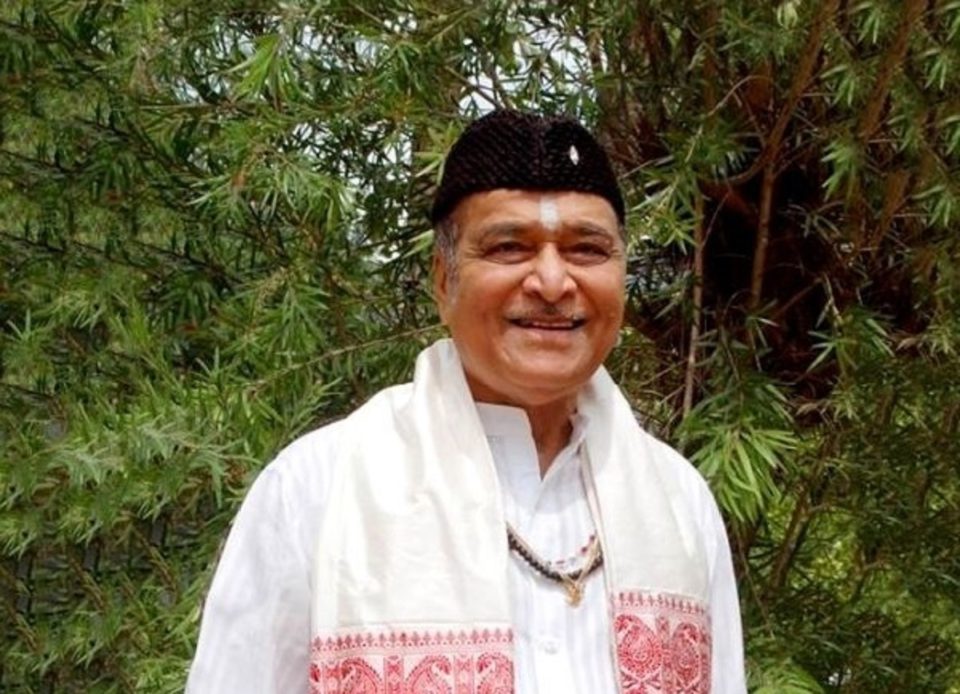On Thursday, the 8th of September, Google paid homage to a legendary singer, filmmaker and composer Bhupen Hazarika on his 96th birth anniversary with Google Doodle. Bhupen Hazarika was an acclaimed Assamese-Indian filmmaker and renowned singer who created music for many films. He is also northeast India’s leading social-cultural reformer whose compositions and creations united people belonging to every caste, creed and socio-economic background. The artwork was created by a Mumbai-based guest artist named Rutuja Mali who celebrated Hazarika’s work that popularised Assamese folk music and cinema.
What Google Doodle says about Bhupen Hazarika?
Bhupen Hazarika was born on this day in the year 1926 in the Northeastern region of India. Hazarika’s home state is Assam which has always homed many tribes and indigenous groups. Since childhood, Bhupen Hazarika had shown an interest in folk tales and songs while residing beside the Brahmaputra River. His musical talents grew with time and attracted many Assamese lyricists including Jyoti prasad Agarwal, and filmmaker, Bishnu Prasad Rabha. They not only helloed Hazarika recording his first song in the studio but also launched his music career at the tender age of 10.
When Bhupen Hazarika turned 12, he wrote and recorded songs for movies like Indramalati: Kaxote Kolosi Loi, and Biswo Bijoyi Naujawan. Hazarika composed many musical creations and had a reputation for storytelling through songs. His stories were loved by the people as they contained grief and happiness, romance and loneliness, strife and determination and courage and unity altogether.
According to Google, “Hazarika was not only a child music prodigy, he was also an intellectual. He graduated with a master’s in political science from Banaras Hindu University in 1946, and went on to earn a PhD in mass communications from Columbia University in 1952.”
Bhupen Hazarika completed his studies in America and returned back. He continued writing songs and movies which gained popularity. Likewise, Assamese culture also gained attraction at the national and international levels. In his life, Bhupen Hazarika received various awards and recognitions for his work and outstanding contribution to music culture in India. In 2019, Bhupen Hazarika was honoured with the highest civilian award in India, Bharat Ratna and the Padma Vibhushan, India’s second-highest civilian award in 2012.
Apart from music, Bhupen Hazarika served as a director and chairman of many associations and boards like the Indian government’s National Film Development Corporation. On Thursday, union home minister Amit Shah remembered Bhupen Hazarika on his birth anniversary and tweeted, “I bow to Bharat Ratna Dr Bhupen Hazarika Ji, an amazing musician with an exceptional voice, on his Jayanti. With his versatile and mesmerising songs, he popularised Indian music & Assamese folk culture across the world. His contribution to the world of music & art is commendable,”.
Some lesser-known facts about Bhupen Hazarika
- Bhupen Hazarika was widely known as Sudha Kontho which means nectar throated like a cuckoo bird. Most of his songs were written in the Assamese language himself which marked universal brotherhood and humanity. His songs had been translated into several languages, particularly Hindi and Bengali.
- Hazarika met Priyamvada Patel at Colombia University whom he married in 1950. Together, the couple had one son named Tez Hazarika who was born in 1952. They all returned to India in 1953.
- Bhupen Hazarika befriended Paul Robeson in New York who was a known civil rights activist at that time. Hazarika was highly influenced by Robeson’s work and composed many songs following Robeson’s path who once told him about his guitar. Bhupen Hazarika’s song Bistirno Parore is based on Robeson’s Ol’ Man River tune.
- His songs, which centre on themes of intergroup harmony, global justice, and humanity, are particularly well-liked in Assam, West Bengal, and Bangladesh. He is also credited for introducing Assamese and Northeast Indian folk music and culture to Hindi movies on a national scale.
- Bhupen Hazarika was closely associated with the leftist Indian People’s Theatre Association after he returned from America in 1953. He became the Secretary of the Reception Committee of the Third All Assam Conference of IPTA, held in Guwahati in 1955.
- Hazarika’s Bangladeshi composition also received international acclaim. He was elected as the President of the Assam Sahitya Sabha in 1993 and a member of the Assam Assembly from the Nauboicha constituency in 1967.
- Hazarika always supported the social battle against entrenched forces of casteism which always degraded the Koibarta community.
- From an early age, he led the fight against the pervasive forces of casteism that mocked a Koibarta singer creating a name for himself and preventing him from being with the upper-caste Brahmin woman he had fallen in love. When Hazarika eventually got married, it was to a Brahmin woman as a form of retaliation against a caste-based society.
- Hazarika produced a 52-episode television program that was titled Dawn for the Star TV network. He produced an 18-part documentary Glimpses of the Misty East which was based on the cultural progress of Northeast India from 1947-1997.
- Bhupen Hazarika died because of multi-organ failure on 5th November 2011 after he was admitted to the Kokilaben Dhirubhai Ambani Hospital and Medical Research Institute in Mumbai. His body was cremated near the Brahmaputra River on 9th November 2011 in a plot donated by Guwahati University. More than half a million people attended his funeral possession.
- In a poll conducted, Hazarika’s song Manush Manusher Jonno was selected as the second most favourite song after the National anthem of Bangladesh.
- A full-length documentary biopic movie has been made based on his life titled Moi Eti Zazabor (‘I am a Wanderer’) which is co-directed by Late Waesqurni Bora and Arnab Jan Deka
- Dhola-Sadiya bridge, the longest road bridge in India is built over the Lohit River, a Brahmaputra River tributary. Dhola and Sadiya in the Tinsukia district of Assam are linked by the bridge named after Bhupen Hazarika.
